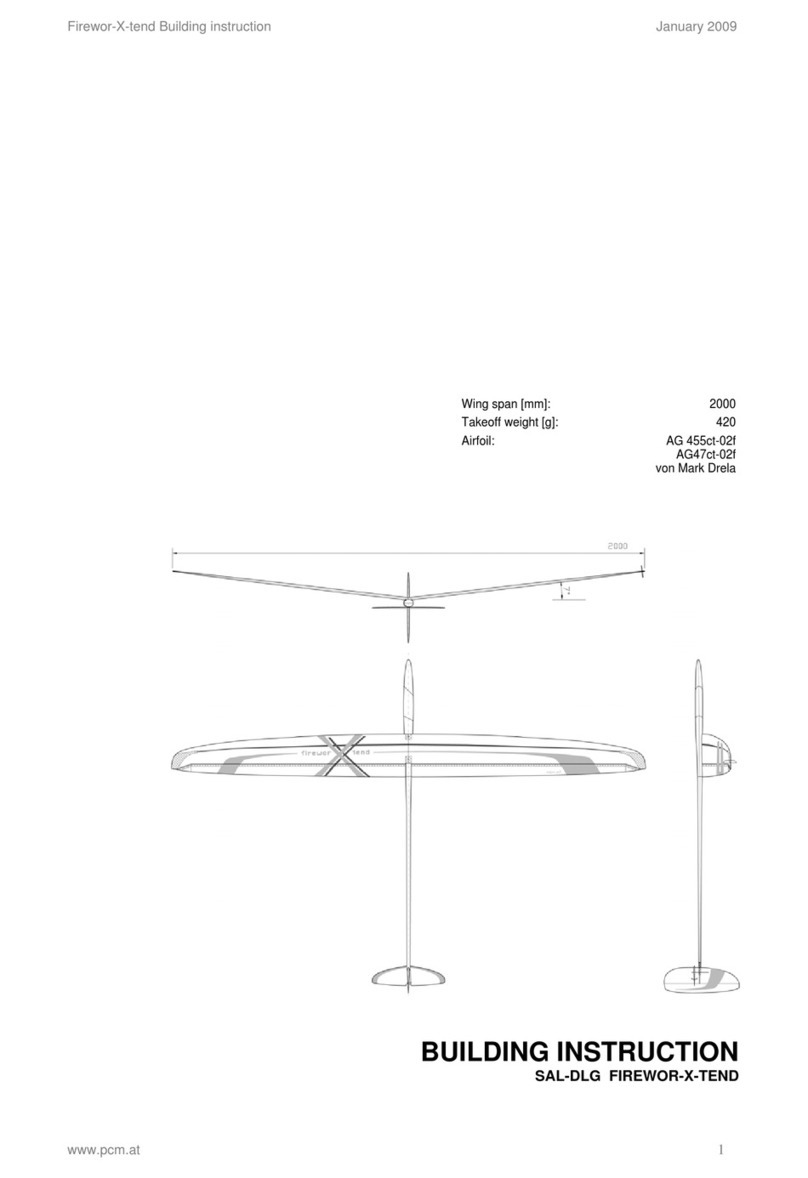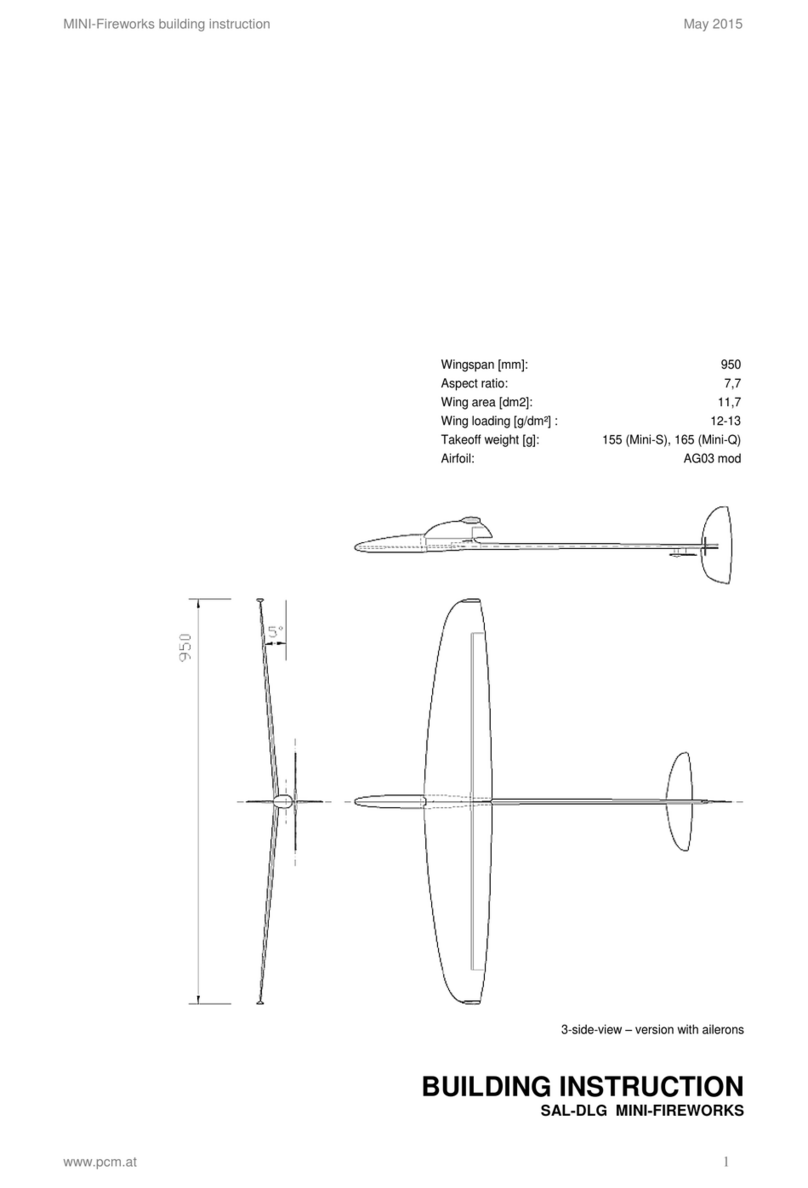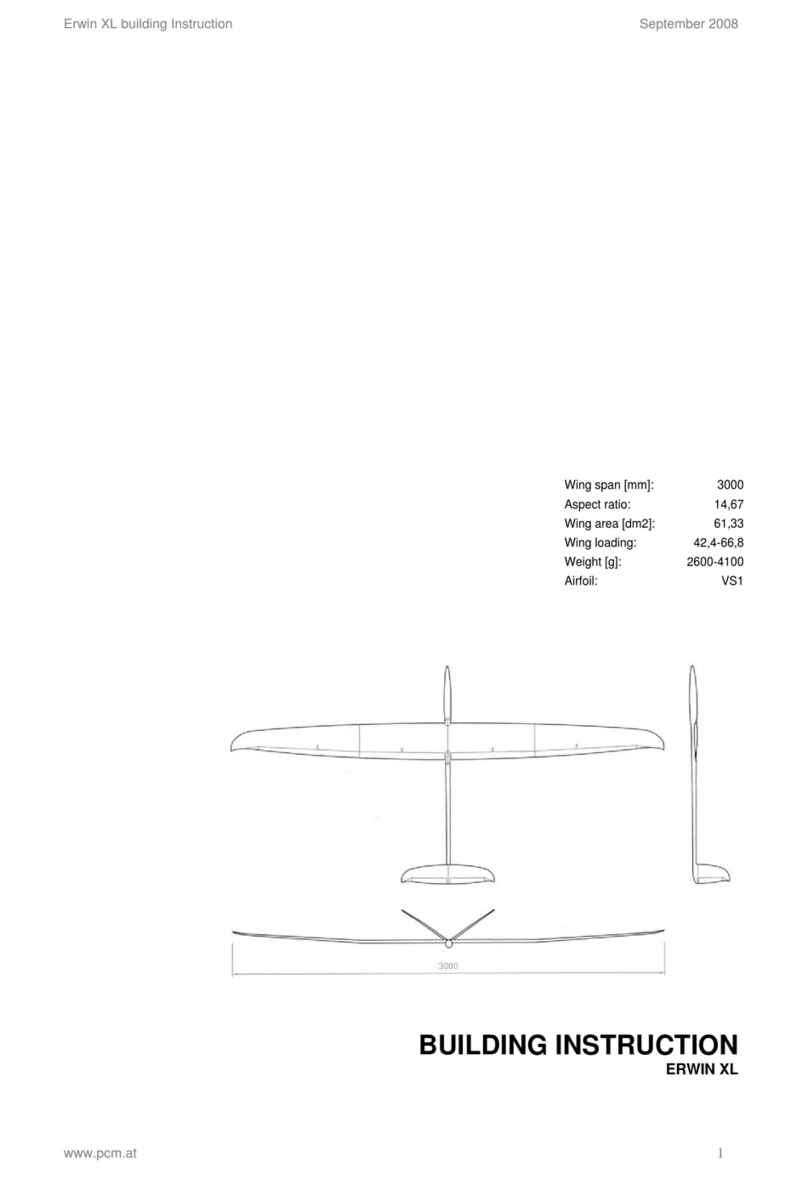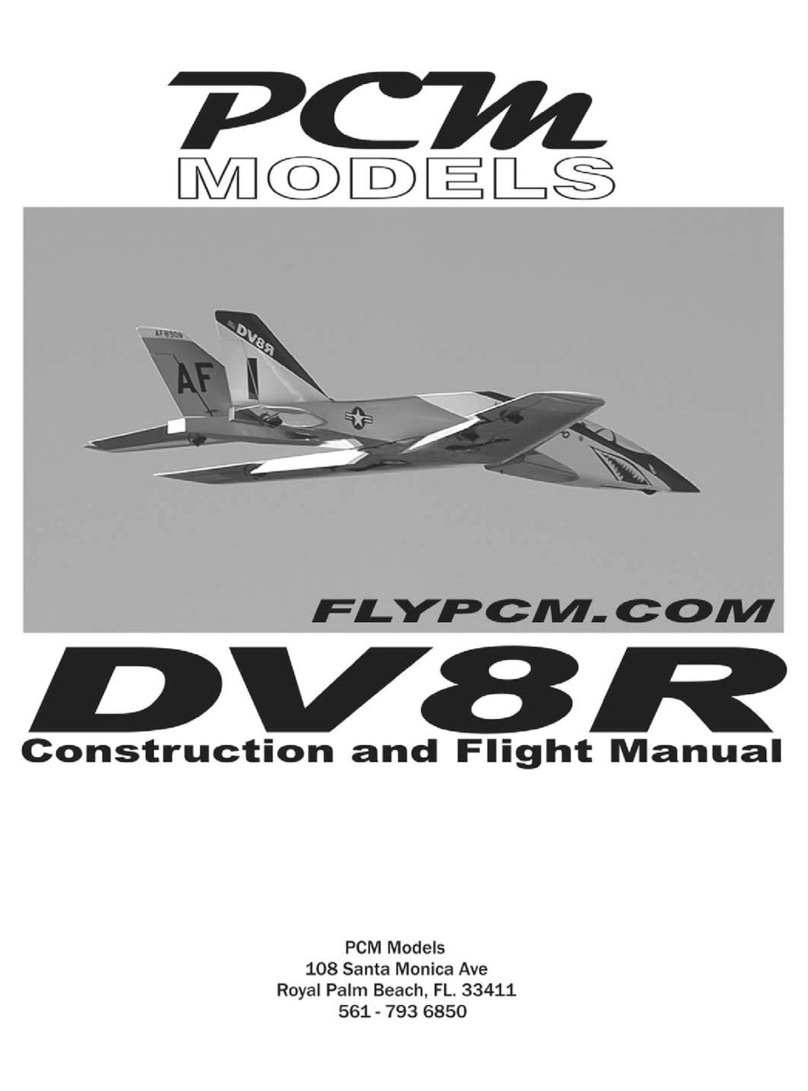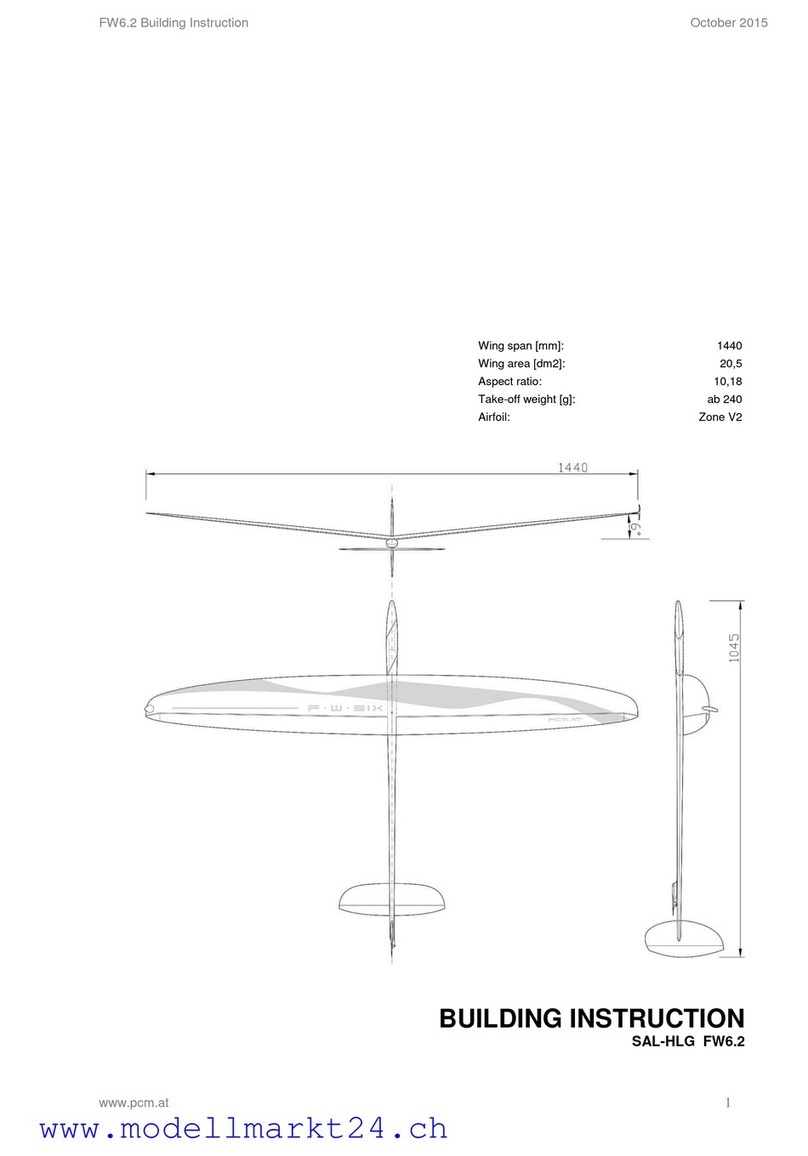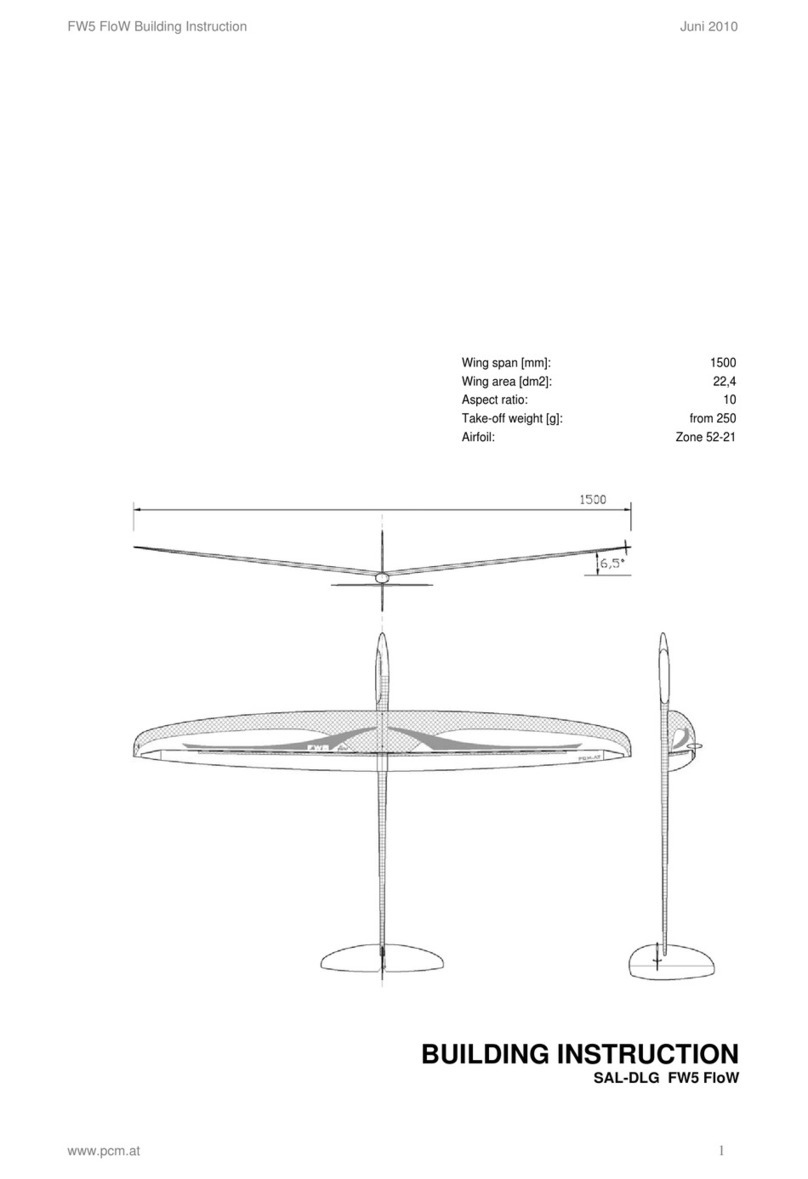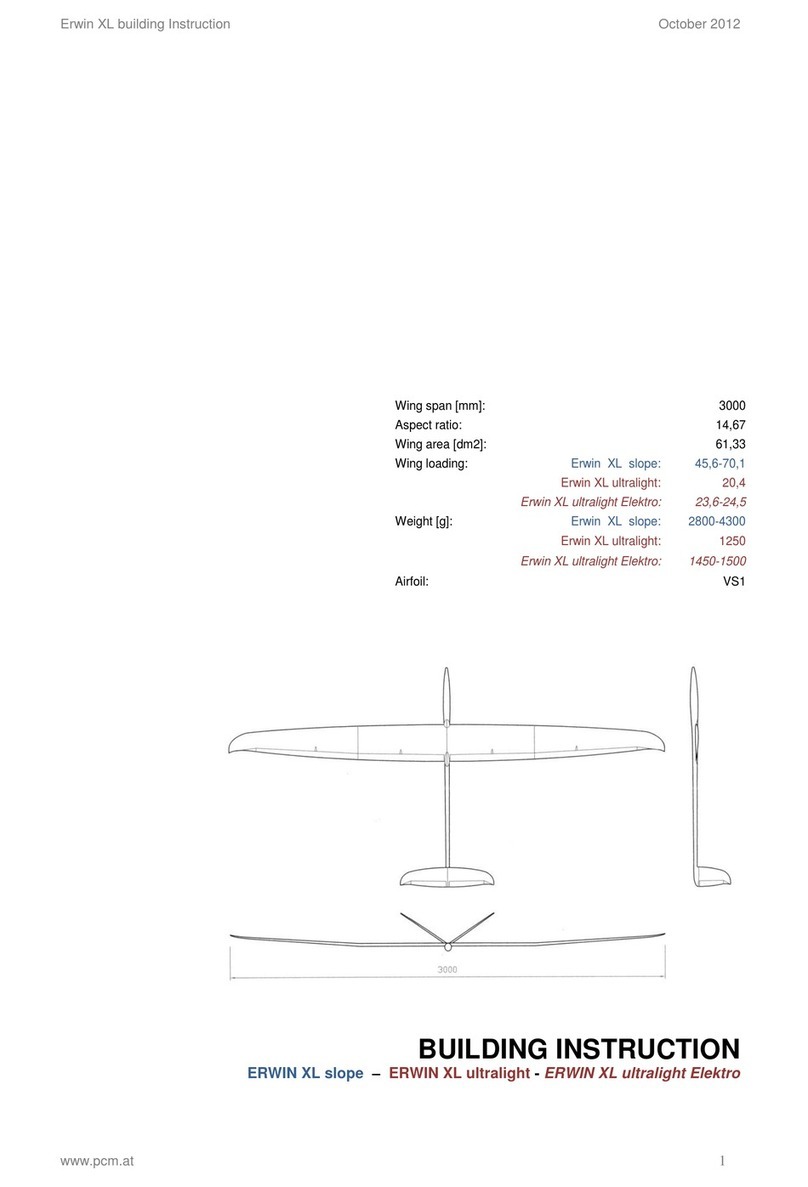
FW6 Building Instruction February 2015
www.pcm.at 3
Fuselage + canopy
Wing
Rudder and elevator CFR
Radio board
CFR ballast tube
Lever for controlling rudder, 1 pc.
Lever for controlling elevator, 1 pc.
Kevlar wire for controlling rudder and elevator
Steel wire for torsion springs, 2 pc.
Brass pipes for levers of ailerons, 2 pc.
Aluminium pipes for push rods for ailerons, 2 pc.
1mm steel wire for controlling ailerons, 4 pc.
2mm carbon tubes for controlling ailerons, 2 pc.
Screws for fixing wing, 2 pc.
Nylon screws for fixing elevator, 2 pc.
Throwing blade, 1 Stk.
Lead balls for ballast
1,5mm flexible steel wire for ballast
1,5mm normal steel wire for ballast hook
Bowden cable inner tube, 3cm
D47 Servo support
Micro ball connectors
Building instruction (for download from our website)
2. What else do you need:
Epoxy-glue (for example UHU 300 endfest or Pattex Stabilit)
Super glue, both runny and thick
Carbon rovings
Electrical equipment (On/Off-switch, cables, plug...)
Electronic equipment
Shrinking tube...
- Graupner DS 281 (cuttings on radio board are prepared for this
servo)
Servo rudder and elevator:
- Dymond D-47 (cuttings on radio board are prepared for this servo)
Same style:
- Futaba FS31
- Modell Expert X31
- GP NiMH Accu 35AAAH, Weight/cell 6g
(1,2 Volt 0,35 Ah 1/2AAA)
- 2,4GHz possible due to kevlar fuse cone
- Futaba R6106HFC FASST
- Multiplex RX-5 light M-link
- Mulitplex RX-6 light M-link
- Spektrum AR6115e
- Orange RX DSM2
Apart from RX-6 all receivers must be removed from their casings and
covered with heat shrink tube. See Chapter receiver installation.
